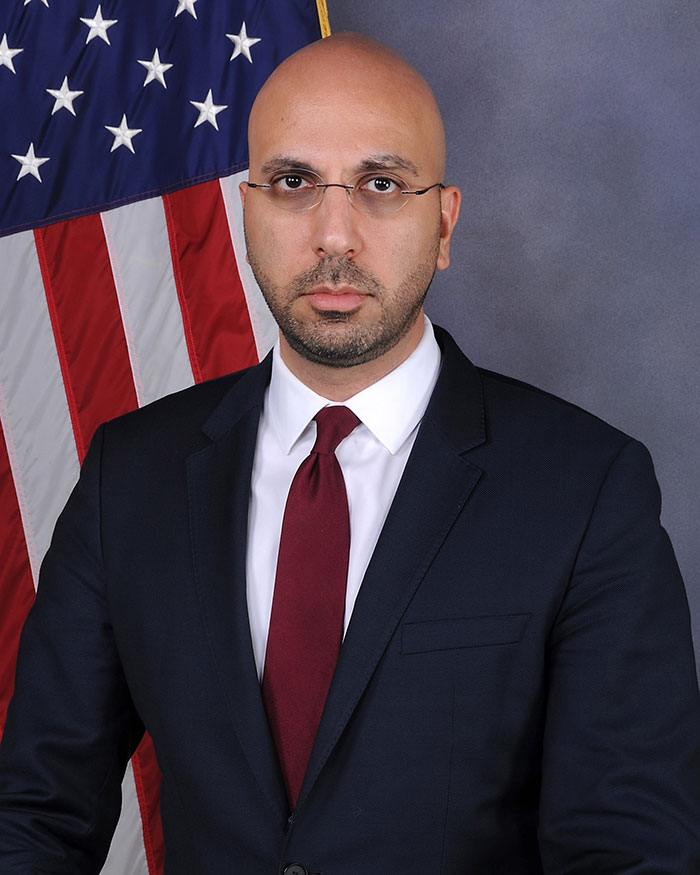WRAIR Announces COVID-19 Vaccine Candidate, Targets Clinical Trial Date

Scientists with the U.S. Army Medical Research and Development Command (USAMRDC) say they expect to begin Phase 1 clinical trials of a vaccine designed to combat the novel coronavirus later this year. The news was delivered during a press briefing with national media outlets on October 14.
"There's a lot that gives me encouragement about this vaccine approach that we're taking," said Dr. Kayvon Modjarrad, Director of Emerging Infectious Diseases at USAMRDC's Walter Reed Army Institute of Research (WRAIR), during the call.
Modjarrad noted that production of the vaccine candidate – which was developed internally at WRAIR – has already begun at WRAIR's own bio-production facility. The vaccine, currently dubbed "SpFN" (short for "spike ferritin nanoparticle," and pronounced "spiff-in" according to Modjarrad) employs ferritin, a protein found in almost all living organisms, to achieve its intended goal. By attaching a certain type of spike protein to a polymerized version of ferritin, WRAIR scientists hope the resulting vaccination dose will block COVID-19 infection. Scientists have already begun testing the candidate.
Said Modjarrad of the development process, "The results we're seeing and the methods that are being applied to our vaccine in the animal studies are showing […] consistent results from the methodology [so] that we can bench mark it against the other vaccine candidates."
The briefing itself was organized as part of the larger Association of the United States Army (AUSA) event, an annual conference running virtually this year from October 13 - 16. Also featured during the briefing were Lt. Gen. R. Scott Dingle, U.S. Army Surgeon General and Commanding General of the U.S. Army Medical Command (AMC), and Mr. John Resta, Director of the U.S. Army Public Health Center. During their respective statements, both men focused on the large-scale mobilization and substantial achievements of the Army's medical apparatus during the COVID-19 pandemic on behalf of both U.S. Soldiers and the American public. Notably, scientists at WRAIR began developing several vaccine prototypes utilizing a previously-tested platform back in January – at the very beginning of the novel coronavirus outbreak – in an attempt to identify those capable of inducing the strongest immune response. The most promising prototype was then shipped to USAMRDC's U.S. Army Institute of Infectious Diseases (USAMRIID) for large animal efficacy testing. This early effort by USAMRDC labs likely saved weeks of valuable time.
"I am very proud of the Army Medicine Team," said Dingle. "I've been able to witness first-hand how Army medical professionals have worked to ensure that we have healthy Soldiers, healthy workplaces, and healthy communities across the Nation."
Aside from the SpFN vaccine, Modjarrad also noted during the press briefing that a large number of subject matter experts across the U.S. Department of Defense (DOD) – including himself and others at WRAIR – are also currently providing technical expertise for a variety of other, additional vaccine candidates being developed via funding from Operation Warp Speed (OWS) – the federal effort spearheaded by the administration of President Donald Trump to develop countermeasures to COVID-19. Both WRAIR and the larger USAMRDC are also providing resources at their various laboratory locations to help with clinical evaluation of said vaccines.
With regard to SpFN, Modjarrad is hopeful the platform could eventually be used as a universal vaccine that could, in time, also be applied to future coronaviruses.
"We are trying to not just be in a reactive mode but to be anticipating the next coronavirus that might emerge from the animal reservoir," said Modjarrad.














